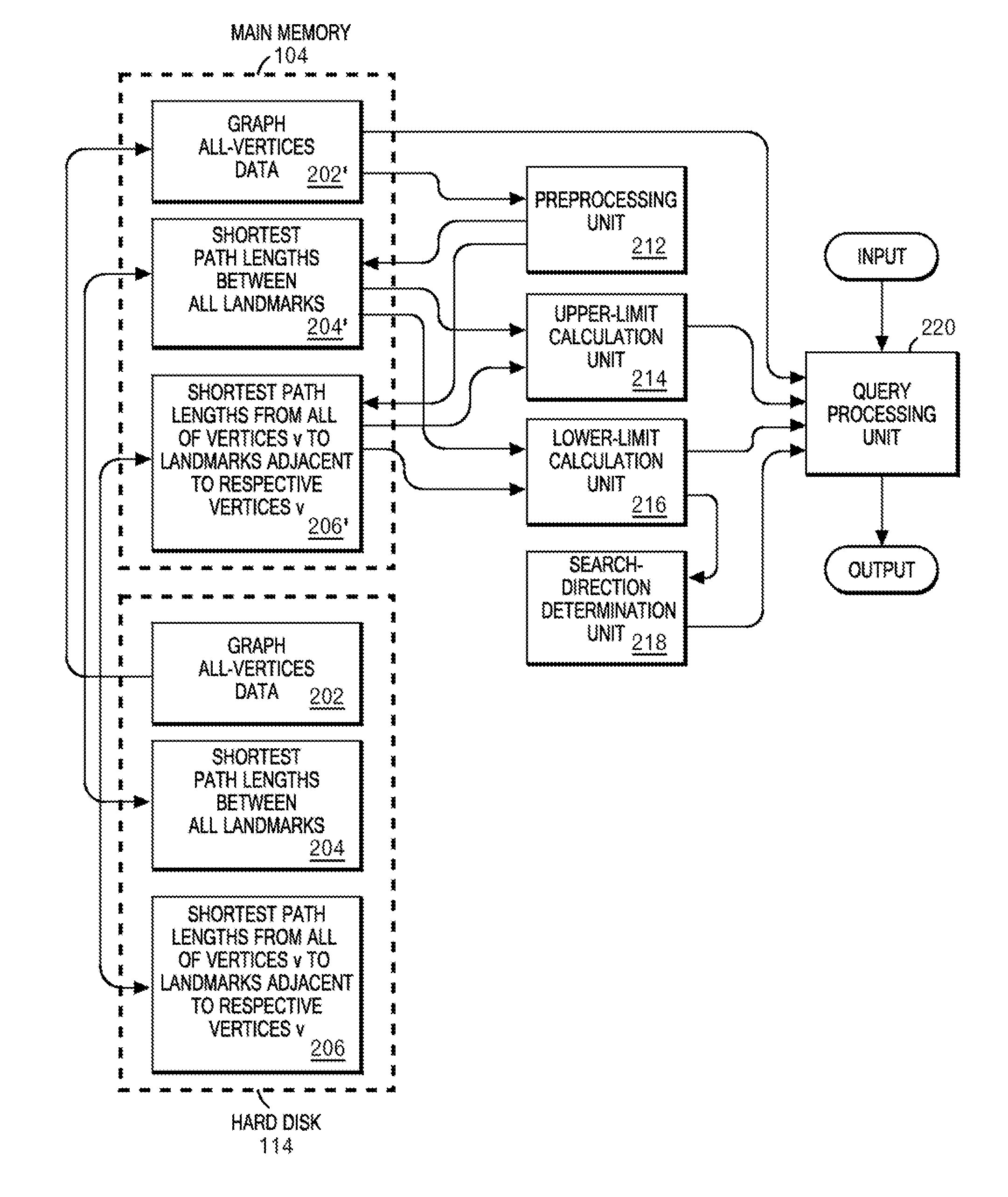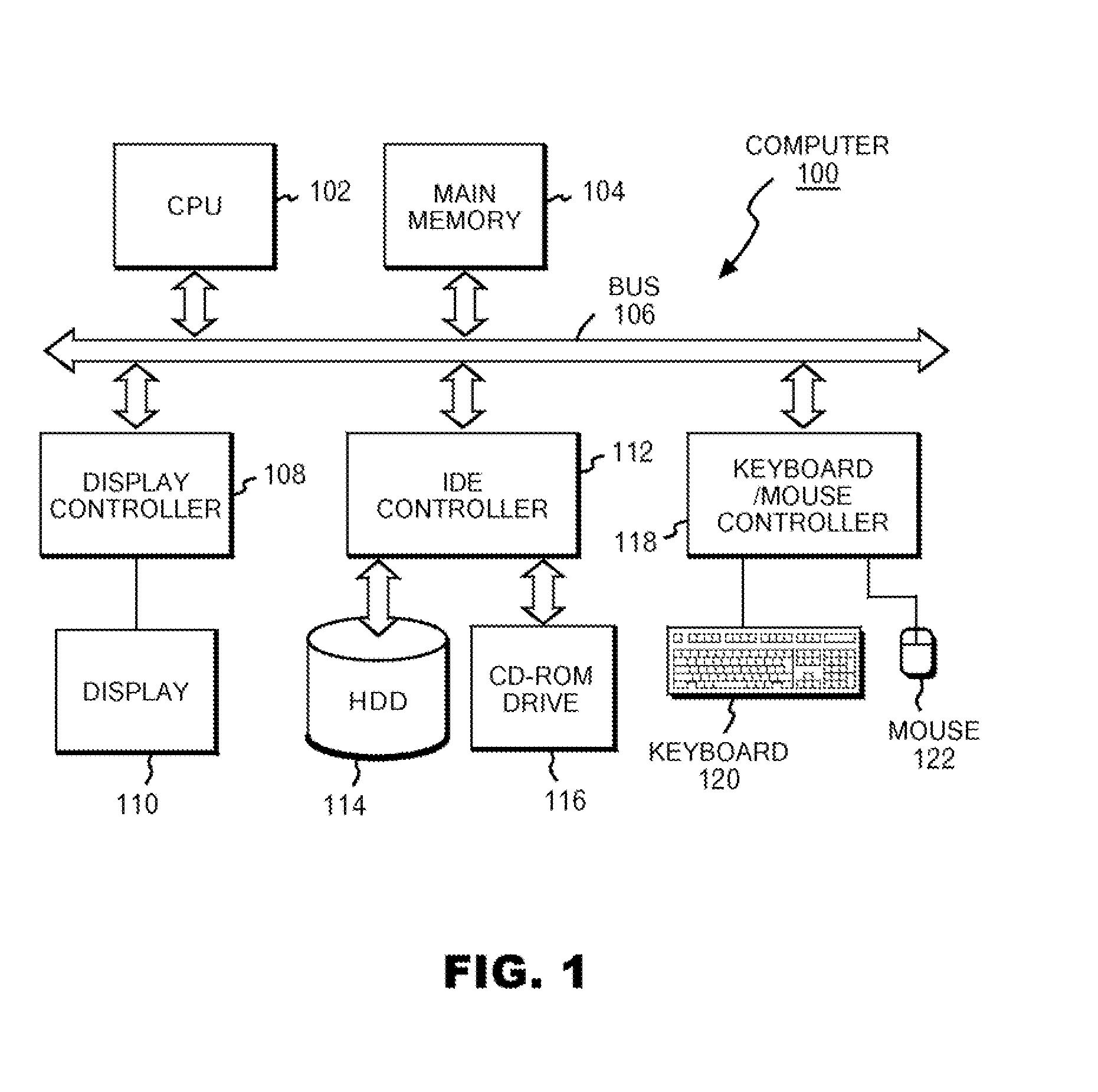Fast algorithm for peer-to-peer shortest path problem
a peer-to-peer shortest path and algorithm technology, applied in the field of pathsearch technology, can solve the problems of becoming unrealistic in terms of calculation amount and conventionally being a problem, and achieve the effect of speeding up the path search
- Summary
- Abstract
- Description
- Claims
- Application Information
AI Technical Summary
Benefits of technology
Problems solved by technology
Method used
Image
Examples
Embodiment Construction
[0041]An embodiment example of the present invention will be described below based on the drawings. Unless otherwise stated, the same reference numerals refer to the same subjects throughout all of the drawings. Note that described below is one embodiment of the present invention, and that there is no intention to limit the present invention to the contents described in connection with this embodiment example.
[0042]FIG. 1 is a block diagram of a hardware configuration used for executing a method of the present invention. In FIG. 1, a computer 100 includes a CPU 102 and a main memory 104, and these are connected to a bus 106. The main memory 104 is one having a storage capacity of at least 512 MB, and suitably not less than 1 GB. In order to load, onto the main memory, data (all-vertices data) on all of vertices in a later described graph, the larger the capacity of the main memory 104 is, the more preferable. The CPU is, suitably, one based on an architecture of 32 bits or 64 bits, ...
PUM
 Login to View More
Login to View More Abstract
Description
Claims
Application Information
 Login to View More
Login to View More - R&D
- Intellectual Property
- Life Sciences
- Materials
- Tech Scout
- Unparalleled Data Quality
- Higher Quality Content
- 60% Fewer Hallucinations
Browse by: Latest US Patents, China's latest patents, Technical Efficacy Thesaurus, Application Domain, Technology Topic, Popular Technical Reports.
© 2025 PatSnap. All rights reserved.Legal|Privacy policy|Modern Slavery Act Transparency Statement|Sitemap|About US| Contact US: help@patsnap.com



